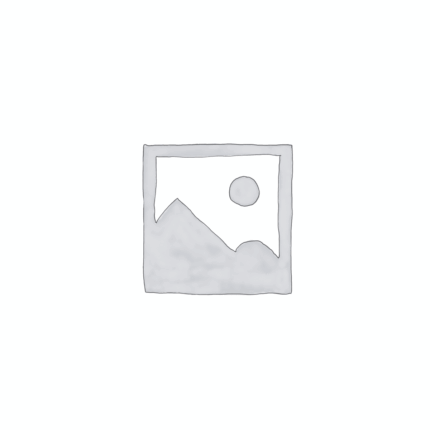Aspartame
Aspartame is a low-calorie artificial sweetener approximately 200 times sweeter than sucrose (table sugar). It is a methyl ester of the dipeptide composed of aspartic acid and phenylalanine. Due to its intense sweetness and low-calorie nature, aspartame is widely used as a sugar substitute in various food and beverage products. It is popular among consumers seeking to reduce caloric intake, especially diabetics and those on weight management programs. Aspartame breaks down at high temperatures, limiting its use in certain cooking or baking applications. It is approved by numerous global food safety authorities, including the FDA and EFSA.
Aspartame Uses
Primary Uses
Food & Beverages
- Used as a sugar substitute in soft drinks, diet sodas, and flavored waters.
- Added to sugar-free chewing gums, candies, and breath mints.
- Used in powdered drink mixes and tabletop sweeteners.
- Incorporated in low-calorie desserts like sugar-free yogurts, ice creams, and puddings.
- Used in baked goods, though less heat-stable than other sweeteners (mainly in low-heat applications).
Pharmaceuticals
- Added to chewable tablets, syrups, and vitamins to improve taste without adding calories.
- Used in diabetic-friendly formulations.
Personal Care Products
- Incorporated into toothpaste and mouthwashes as a sweetening agent without promoting tooth decay.
Secondary Uses
Dietary Supplements
- Utilized in protein shakes, meal replacements, and vitamin powders.
Animal Feed
- Occasionally used in palatable veterinary formulations for flavor enhancement.
Industrial Uses
- Used in certain biotechnological applications where sweetness is required but caloric input must be minimized.
Food Packaging
- Incorporated in oxygen scavenging systems to preserve freshness indirectly by reducing microbial growth (less common).
1. Basic Identification Attributes
- Chemical Name (IUPAC): L-α-Aspartyl-L-phenylalanine methyl ester
- Common/Trade Name: Aspartame, NutraSweet, Equal
- CAS Number: 22839-47-0
- HS Code: 2932.19.00
- Molecular Formula: C₁₄H₁₈N₂O₅
- Synonyms:
- N-L-α-Aspartyl-L-phenylalanine 1-methyl ester
- E951 (EU food additive code)
2. Physical & Chemical Properties
- Physical State: White crystalline powder
- Color & Odor: White, odorless or slightly sweet aroma
- Melting Point: ~246 °C (decomposes)
- Boiling Point: N/A (decomposes)
- Density: ~1.3 g/cm³
- Solubility: Soluble in water (~50 g/L at 20°C), slightly soluble in ethanol
- pH Level: Stable in pH 4–6 range
- Vapor Pressure: Negligible
- Flash Point: Non-flammable
- Autoignition Temperature: N/A
- Viscosity: N/A (solid)
3. Safety & Hazard Attributes
- Hazard Class (GHS): Generally Recognized as Safe (GRAS)
- NFPA Ratings: Health 1, Flammability 0, Reactivity 0
- Exposure Limits: No specific OSHA/ACGIH limits due to low toxicity
- Reactivity: Stable under normal conditions; sensitive to high heat and prolonged storage in moisture
4. Storage & Handling Attributes
- Storage Conditions: Store in a cool, dry place, away from heat and moisture
- Container Type: Airtight containers, typically HDPE or glass
- Shelf Life: Typically 2–3 years if stored properly
- Special Handling: Avoid exposure to high temperatures and humidity to prevent breakdown
5. Regulatory & Compliance Attributes
- FDA (USA): Approved as food additive (21 CFR 172.804)
- EFSA (EU): Approved (E951)
- JECFA: Acceptable Daily Intake (ADI) = 40 mg/kg body weight
- Hazard Symbols (GHS): None
- Transportation Restrictions: Not regulated as hazardous
- Waste Disposal: Dispose in accordance with local regulations; non-hazardous
6. Environmental & Health Impact
- Ecotoxicity: Low toxicity to aquatic life
- Persistence: Breaks down into amino acids; not persistent in the environment
- Carcinogenicity/Mutagenicity: Not classified as carcinogenic or mutagenic
- Biodegradability: Readily biodegradable under aerobic conditions
Safety Handling Precautions
- PPE: Use gloves and dust masks when handling powder to avoid inhalation and skin contact.
- Handling: Avoid inhaling dust; work in well-ventilated areas.
- Storage: Keep container tightly closed and store in cool, dry place away from sunlight.
- Hygiene: Wash hands thoroughly after handling; avoid eating, drinking, or smoking in work area.
- Dust Control: Use local exhaust ventilation to control airborne particles.
First Aid Measures
- Inhalation: Move to fresh air immediately; seek medical attention if breathing difficulties occur.
- Skin Contact: Wash with soap and water; seek medical advice if irritation develops.
- Eye Contact: Rinse eyes thoroughly with water for 15 minutes; consult physician if irritation persists.
- Ingestion: Rinse mouth with water; seek medical attention if large amounts are swallowed.
Firefighting Measures
- Fire Hazards: Non-flammable under normal conditions; may decompose releasing irritant gases at high temperatures.
- Extinguishing Media: Use water spray, foam, or dry chemical powder.
- Special Precautions: Firefighters should use protective gear and breathing apparatus due to potential irritant gases during decomposition.


 Pesticides (Herbicides, Insecticides, Fungicides)
Pesticides (Herbicides, Insecticides, Fungicides) Animal Feed Additives
Animal Feed Additives Biostimulants
Biostimulants Plant Growth Regulators
Plant Growth Regulators Fertilizers
Fertilizers Soil Conditioners
Soil Conditioners
 Decoratives
Decoratives Dough Conditioners
Dough Conditioners Fat Replacers
Fat Replacers Flour Treatments
Flour Treatments Leavening Agents
Leavening Agents Preservatives(baking)
Preservatives(baking)
 Bleaching Agents
Bleaching Agents Builders
Builders Enzymes
Enzymes Fragrances
Fragrances Surfactants(cleaning)
Surfactants(cleaning) Solvents (cleaning)
Solvents (cleaning)
 Admixtures
Admixtures Anti-Corrosion Coatings
Anti-Corrosion Coatings Concrete Repair Chemicals
Concrete Repair Chemicals Curing Compounds
Curing Compounds Sealants and Adhesives
Sealants and Adhesives Waterproofing Agents
Waterproofing Agents
 Antioxidants(cosmetic)
Antioxidants(cosmetic) Emollients
Emollients Fragrances and Essential Oils
Fragrances and Essential Oils Humectants
Humectants Surfactants(cosmetic)
Surfactants(cosmetic) Thickeners
Thickeners UV Filters
UV Filters Preservatives (cosmetic)
Preservatives (cosmetic)
 Bio-based Solvents
Bio-based Solvents Biodegradable Surfactants
Biodegradable Surfactants Carbon Capture Chemicals
Carbon Capture Chemicals Renewable Polymers
Renewable Polymers Wastewater Treatment Chemicals
Wastewater Treatment Chemicals
 Acidulants
Acidulants Antioxidants
Antioxidants Colorants(food)
Colorants(food) Emulsifiers
Emulsifiers Flavor Enhancers
Flavor Enhancers Nutraceutical Ingredients (food)
Nutraceutical Ingredients (food) Nutrient Supplements
Nutrient Supplements Preservatives(food)
Preservatives(food) Sweeteners
Sweeteners
 Dried Herbs
Dried Herbs Fresh Herbs
Fresh Herbs Ground Spices
Ground Spices Spice Blends
Spice Blends Whole Spices
Whole Spices
 Analytical Reagents
Analytical Reagents Biochemical Reagents
Biochemical Reagents Chromatography Chemicals
Chromatography Chemicals Inorganic and Organic Standards
Inorganic and Organic Standards Laboratory Safety Chemicals
Laboratory Safety Chemicals Microbiology and Cell Culture Reagents
Microbiology and Cell Culture Reagents Molecular Biology Reagents
Molecular Biology Reagents Solvents(lab)
Solvents(lab) Specialty Laboratory Chemicals
Specialty Laboratory Chemicals Spectroscopy Reagents
Spectroscopy Reagents
 Collectors
Collectors Dust Suppressants
Dust Suppressants Explosives and Blasting Agents
Explosives and Blasting Agents Flocculants and Coagulants
Flocculants and Coagulants Frothers
Frothers Leaching Agents
Leaching Agents PH Modifiers
PH Modifiers Precious Metal Extraction Agents
Precious Metal Extraction Agents
 Catalysts
Catalysts Corrosion Inhibitors
Corrosion Inhibitors Demulsifiers
Demulsifiers Drilling Fluids
Drilling Fluids Hydraulic Fracturing Fluids
Hydraulic Fracturing Fluids Scale Inhibitors(oil)
Scale Inhibitors(oil) Surfactants(oil)
Surfactants(oil)
 Active Pharmaceutical Ingredients (APIs)
Active Pharmaceutical Ingredients (APIs) Analgesics and Antipyretics
Analgesics and Antipyretics Antibiotics
Antibiotics Antiseptics and Disinfectants
Antiseptics and Disinfectants Excipients
Excipients Nutraceutical Ingredients (Pharmaceutical)
Nutraceutical Ingredients (Pharmaceutical) Solvents(pharmaceutical)
Solvents(pharmaceutical) Vaccine Adjuvants
Vaccine Adjuvants
 Antioxidants(plastic)
Antioxidants(plastic) Colorants (Pigments, Dyes)
Colorants (Pigments, Dyes) Fillers and Reinforcements
Fillers and Reinforcements Flame Retardants
Flame Retardants Monomers
Monomers Plasticizers
Plasticizers Polymerization Initiators
Polymerization Initiators Stabilizers (UV, Heat)
Stabilizers (UV, Heat)
 Accelerators and Retarders
Accelerators and Retarders Adhesion Promoters
Adhesion Promoters Antidegradants (Antioxidants, Antiozonants)
Antidegradants (Antioxidants, Antiozonants) Blowing Agents (for foam rubber)
Blowing Agents (for foam rubber) Plasticizers and Softeners
Plasticizers and Softeners Reinforcing Agents (Carbon Black, Silica)
Reinforcing Agents (Carbon Black, Silica) Vulcanizing Agents (e.g., Sulfur, Peroxides)
Vulcanizing Agents (e.g., Sulfur, Peroxides)
 Analytical Reagents
Analytical Reagents Automotive chemicals
Automotive chemicals Electronic Chemicals
Electronic Chemicals Lubricants
Lubricants Photographic Chemicals
Photographic Chemicals Pyrotechnic Chemicals
Pyrotechnic Chemicals Refrigerants
Refrigerants Sealants and Adhesives
Sealants and Adhesives
 Antistatic Agents
Antistatic Agents Bleaching Agents
Bleaching Agents Dyes and Pigments
Dyes and Pigments Finishing Agents
Finishing Agents Flame Retardants
Flame Retardants Softening Agents
Softening Agents
 Antifoaming Agents
Antifoaming Agents Chelating Agents
Chelating Agents Coagulants and Flocculants
Coagulants and Flocculants Corrosion Inhibitors
Corrosion Inhibitors Disinfectants and Biocides
Disinfectants and Biocides Oxidizing Agents
Oxidizing Agents pH Adjusters (water)
pH Adjusters (water) Scale Inhibitors( water)
Scale Inhibitors( water)















